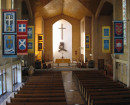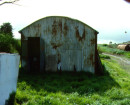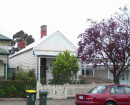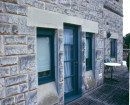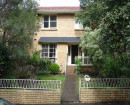Railway Station Estate
Morris Street and Wright Street and Stanford Street SUNSHINE, Brimbank City
-
Add to tour
You must log in to do that.
-
Share
-
Shortlist place
You must log in to do that.
- Download report
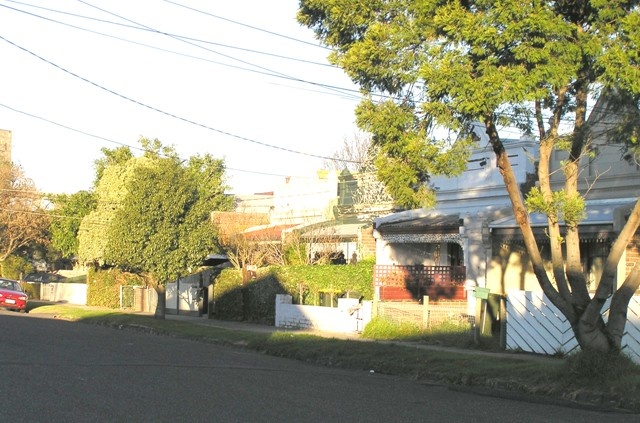

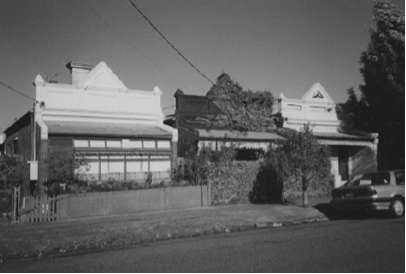
Statement of Significance
Statement of Significance
The Railway Station Estate - Wright & Edwards Heritage Area is of regional historical and architectural significance as a sub-division first developed in the speculative boom of the 1880s. This related to the industrialisation of the area and the creation of a new suburb - the township of Braybrook Junction. The few remaining houses of the early 1890s are amongst the oldest in the district and are a remarkable survival from the era of the 1890s Depression, when many newly-built houses were moved.
This subdivision is also significant for its diversity and the range of housing from different periods, especially the years immediately following the establishment of H.V. McKay's Sunshine Harvester Works at Braybrook Junction. The area provides an interesting comparison with H.V. McKay's housing estate, since many of his Ballarat workers moved or built homes here in the early years of the 20th century. The neighbourhood's population more than doubled in ten years, with further expansion in the 1920s -30s and during and after World War Two, creating consistent streetscapes of freestanding, single storey timber houses with a consistent garden setback.
-
-
Railway Station Estate - Physical Description 1
All the original allotments in this rectangular grid subdivision were 40 foot frontages. Several of the original 'lanes', between the blocks, can still be seen. In some cases, two houses were built on one allotment. The best examples of this re-subdivision process can be seen in the row of 1890s houses in Benjamin Street. This row of five single-fronted detached brick Victorian houses has simple parapet ornament, corrugated iron verandahs and iron lace (some original). This parapeted row house type in the form of detached brick cottages is unique in Sunshine. Six houses were built on three of the original subdivision blocks (two to a block). These blocks were originally 40 foot frontage, with a 120 foot depth. One of the houses (the second from the east end of the group) has subsequently been demolished. The facades have had details altered, some with windows replaced, others having the cast iron ornament removed or altered, probably representing attempts to undo renovations of the mid twentieth century.
At least eleven houses survive from the early 1890s subdivision, including the five singlefronted houses in Benjamin Street (Numbers 25, 29, 31, 33, 35); one single-fronted house in Morris Street (No. 179); the house of Edmund Parsons at 114 Morris Street; and the house at 51 Stanford Street. Outside the precinct boundaries are 1890s houses at 46 Chapman Street (altered), and reputedly 79 Couch Street (though this is not obvious from its present form).
While the subdivision and the first few houses date to late nineteenth century, most of the Heritage Area was developed in the first half of the twentieth century. Some houses in the area are said to have been moved here from Ballarat, when H.V. McKay's workers followed him to Braybrook Junction in 1907. These houses, ranging from Edwardian, through building booms in the interwar period and early postwar period, provide consistent streetscapes of freestanding, single storey timber houses with mostly iron roofs, with a consistent garden setback. Edwardian houses in the Heritage Area, of c1905-1915, tend to have an asymmetric facade, with a projecting gable (often half-timbered) and a bullnose verandah on the other side. The roof is otherwise hipped, and often quite tall with a tiny gablet at the peak. They have singlepane sash windows or groups of casement windows, often beneath a decorative timber hood. The doors are solid four-panelled, like the Victorian houses, or have an upper arched pane of glass, and have both highlights and sidelights. Chimneys are similar to the Victorian ones, or have rendered mouldings at the top. Intact examples include: 2 and 70 Benjamin Street; and 95, 97, 101, 120, 122, 144 and 169 Morris Street.
There are many houses from c1915-25 that have features both of the Edwardian and California Bungalow houses, and can be called 'Transitional' or 'Federation Bungalows'. These houses have hipped roofs, but at a much lower pitch than was seen in the Edwardian period. They usually have a half-timbered front gable, also with a lower pitch. The verandah details - turned posts and a timber frieze - are similar to those of Edwardian houses. The verandah roof, however, is a plain skillion and often extends across the entire facade, supported on timber brackets, as was common to California Bungalows. Chimneys are plain and narrow, some with bands of clinker bricks. Intact examples include: 10, 48 and 75 Benjamin Street; and 99-105, 106 and 161 Morris Street.
California Bungalows, of the 1920s, are one of the most common types in the Heritage Area, particular in its western half. They have gabled roofs - either facing the street or parallel to it, though some of the earlier ones still have low hipped roofs. There is usually a smaller gable facing the street which may be half-timbered, rendered or shingled. Front verandahs have skillion or hipped roofs, and are often carried across the entire facade. Verandah supports tend to be heavy and range from paired timber posts resting on masonry (brick or render piers), and tapered masonry piers or simple cast-concrete columns on top of a low masonry wall. Verandahs often have simple triangular brackets. The ends of roof rafters tend to be visible. Windows often have multiple panes in the upper sash. Some of them have box frames that project from the wall of the house; others are grouped in angled bays. Doors of this era had a high-set window above shallow panels or vertical boards, and sometimes a sidelight. Intact examples include: 4, 49 (1930s), 61 and 82 Benjamin Street; 49 Hampshire Road; and 117, 123, 145, 162 and 164 Morris Street.
Houses of the 1930s and early 1940s tend to have tiled hipped roofs, some with a projecting hipped-roof bay. Verandahs have simple brick or render supports. Windows often have geometric leadlights in the upper sashes, and are grouped in twos and threes. Later windows have horizontal glazing bars, and can be found on the corner of the building. There are several exceptions among houses of this era as some were built in the late 1930s in earlier styles, such as Transitional and California Bungalow designs. Intact examples include: 5, 7, 32 and 95 Benjamin Street; 142 Morris Street; and 45 Stanford Street.
Early post-war houses of c1945-55 demonstrate the second main period of housing development in the Heritage Area. They are double fronted with a hip roof and projecting hipped bay to create an asymmetric facade. Roofs are often clad with tiles, in contrast to houses of the earlier periods. Timber windows are placed in banks to create a horizontal format, and some are placed at corners, continuing the late interwar style. Front porches are minimal in size and either set below the roof line or beneath a concrete slab roof. Decoration is minimal and is often limited to stepped 'waterfall' chimneys, which often are a major feature of the facade, and porch detailing in cream brick. Intact examples include: 81 and 89-93 Benjamin Street; 33 and 46 Hampshire Road; and 115 and 124 Morris Street.
The surviving houses that are contributory to the precinct include the following:
ADDRESS, PLACE, DESCRIPTION, DATE
2 Benjamin Street, Edwardian era house, bullnose verandah, 1915c
4 Benjamin Street, House, weatherboard house, 1920c
5 Benjamin Street, House, fibro house for munition workers, 1940s
7 Benjamin Street, House, fibro house for munition workers, 1940s
8 Benjamin Street, House, altered Edwardian era house, 1915c
9 Benjamin Street, House, weatherboard house check, demolition permit issued 2004 1930s
10 Benjamin Street, House, weatherboard house, 1920c
12 Benjamin Street, House, weatherboard house, 1920c
14 Benjamin Street, House "Blamdina", weatherboard house, 1920c
15 Benjamin Street, House, weatherboard house, 1920c
16 Benjamin Street, House, weatherboard house, 1940c
18 Benjamin Street, House, weatherboard house, 1910c
19 Benjamin Street, House, weatherboard house, 1920c
20 Benjamin Street, House, weatherboard house, 1937
21 Benjamin Street, House, weatherboard house, 1920c
22 Benjamin Street, House, weatherboard house, 1937 (NB: rear unit not contributory)
23 Benjamin Street, House, weatherboard house, 1920s
25 Benjamin Street, House, Victorian Brick Row House, 1890-91c, Individually listed Regional significance in 2000 study #133
26 Benjamin Street, House, weatherborad house, 1956
29 Benjamin Street, House, Victorian Brick Row House, 1890-91c, Individually listed Regional significance in 2000 study #134
31 Benjamin Street, House, Victorian Brick Row House, 1890-91c Individually listed Regional significance in 2000 study #135
33 Benjamin Street, House, Victorian Brick Row House, 1890-91c Individually listed Regional significance in 2000 study #136
35 Benjamin Street, House, Victorian Brick Row House, 1890-91c Individually listed Regional significance in 2000 study #137
37 Benjamin Street, House, weatherboard house, 1950
38 Benjamin Street, House, weatherboard house, 1900-10
39 Benjamin Street, House, weatherboard house, 1947
41 Benjamin Street, House, weatherboard house, 1950
43 Benjamin Street, House, weatherboard house, 1950
45 Benjamin Street, House, well preserved weatherboard, 1920s
46 Benjamin Street, House, rendered house similar to those on ICI Estate, 1948-49
47 Benjamin Street, House, weatherboard house, 1920s
48 Benjamin Street, House, weatherboard house, 1920s
49 Benjamin Street, House, weatherboard house, 1930s
50 Benjamin Street, House, weatherboard house, 1900-10
51 Benjamin Street, House, weatherboard house, 1920s
52 Benjamin Street, House, weatherboard house, 1920s
53 Benjamin Street, House, weatherboard house, 1920s
54 Benjamin Street, House, weatherboard house, 1920s
56 Benjamin Street, House, weatherboard house, 1930s
57 Benjamin Street, House, weatherboard house, 1920s
58 Benjamin Street, House, weatherboard house, 1930s
59 Benjamin Street, House, weatherboard house, 1920s
61 Benjamin Street, House, weatherboard house, 1920s
62 Benjamin Street, House, weatherboard house, 1920s
63 Benjamin Street, House, weatherboard house, 1920s
64 Benjamin Street, House, weatherboard house, 1920s
66 Benjamin Street, House, weatherboard house, 1920s
67 Benjamin Street, House, weatherboard house, 1920s
68 Benjamin Street, House, weatherboard house, 1920s
69 Benjamin Street, House, weatherboard house, 1949
70 Benjamin Street, House, weatherboard house, 1900-10
71 Benjamin Street, House, weatherboard house, 1920s
72 Benjamin Street, House, weatherboard house, 1920s
73 Benjamin Street, House, weatherboard house, 1920s
75 Benjamin Street, House, weatherboard house, 1920s
76 Benjamin Street, House, weatherboard house, 1920s
77 Benjamin Street, House, weatherboard house, 1920s
78 Benjamin Street, House, weatherboard house, 1920s
79 Benjamin Street, House, weatherboard house, 1920s
80 Benjamin Street, House, weatherboard house, 1955
81 Benjamin Street, House, weatherboard house, 1947
82 Benjamin Street, House, weatherboard house, 1920s
84 Benjamin Street, House, weatherboard house, 1952
86 Benjamin Street, House, weatherboard house, 1952
88 Benjamin Street, House, weatherboard house, 1952
89 Benjamin Street, House, weatherboard house, 1952
90 Benjamin Street, House, weatherboard house, 1930s
91 Benjamin Street, House, weatherboard house, 1953
93 Benjamin Street, House, weatherboard house, 1953
95 Benjamin Street, House, weatherboard house, 1940
30 Hampshire Road, House, weatherboard house, 1920s
31 Hampshire Road, House, weatherboard house, 1950s
32 Hampshire Road, House, weatherboard house, 1930s
33 Hampshire Road, House, weatherboard house, 1949
41 Hampshire Road, House, weatherboard house, 1940s
42 Hampshire Road, House, weatherboard house, 1920s
43 Hampshire Road, House, weatherboard house, 1920s
44 Hampshire Road, Richards' Dairy and residence, 1936, Local
46 Hampshire Road, Moderne cream brick house and fence, c1955
47 Hampshire Road, House, weatherboard house, 1930s
49 Hampshire Road, House, weatherboard house, 1920s
94 Morris Street, House, weatherboard house, 1920s
95 Morris Street, House, Cast iron verandah, 1915c
97 Morris Street, House, 1915c
99 Morris Street, House, weatherboard house, 1920s
100 Morris Street, House, weatherboard house, 1920s
101 Morris Street, House, weatherboard house, 1910s
103 Morris Street, House, weatherboard house, 1920s
105 Morris Street, House, weatherboard house, 1920s
106 Morris Street, House, weatherboard house, 1920s
110 Morris Street, House, weatherboard house, 1920s
113 Morris Street, House, weatherboard house, 1955
114 Morris Street, Parsons house, weatherboard, 1890s, Individually listed Local significance in 2000 study #113
115 Morris Street, House, weatherboard house, 1955
117 Morris Street, House, weatherboard house, 1920s
119 Morris Street, House, weatherboard house, 1955
120 Morris Street, House, weatherboard house, 1910s
121 Morris Street, House, weatherboard Californian bungalow style, diamond pattern leadlight, 1920s
122 Morris Street, House, weatherboard house, 1910s
123 Morris Street, House, weatherboard house, 1920s
124 Morris Street, House, weatherboard house, 1956
125 Morris Street, House, weatherboard house, 1920s
127 Morris Street, House, weatherboard house, 1940s
129 Morris Street, House, weatherboard house, 1920s
135 Morris Street, House, weatherboard house, 1920s
136 Morris Street, House, weatherboard house, 1920s
137 Morris Street, House, weatherboard house, 1910s
138 Morris Street, House, weatherboard house, 1900-10
140 Morris Street, House, brick house, 1948
141 Morris Street, House, weatherboard house, 1920s
142 Morris Street, House, weatherboard house, 1930s
143 Morris Street, House, weatherboard house, single house appears to cover two blocks shown subdivided in cadastre, 1920s
144 Morris Street, House, Unusual weatherboard and block fronted Edwardian era house, recent carport added at side, 1915c.
145 Morris Street, House, weatherboard house, single house appears to cover two blocks shown subdivided in cadastre, 1920s
148 Morris Street, House, weatherboard house, 1940s
149 Morris Street, House, weatherboard house, 1950s
153 Morris Street, House, cream brick house and fence, 1956
154 Morris Street, House, weatherboard house, 1920-30s
156 Morris Street, House, weatherboard house, 1910s
158 Morris Street, House, weatherboard house, 1920s
159 Morris Street, House, weatherboard house, 1920s
161 Morris Street, House, weatherboard house, 1920s
162 Morris Street, House, weatherboard house, 1920s
163 Morris Street, House, weatherboard house, 1920s
164 Morris Street, House, weatherboard house, 1920s
165 Morris Street, House, weatherboard house, 1920s
167 Morris Street, House, weatherboard house, 1920s
168 Morris Street, House, weatherboard house, 1950s
169 Morris Street, House, weatherboard house, 1910s
171 Morris Street, House, weatherboard house, 1920s
173 Morris Street, House, weatherboard house, 1920s
175 Morris Street, House, weatherboard house, altered windows, recent addition of disabled ramp, 1920s
179 Morris Street, House, Single fronted ashlar fronted timber cottage, convex verandah, 1890s
45 Stanford Street, House, rendered house, garage and fence, 1940c
49 Stanford Street, House, weatherboard house, 1940c
51 Stanford Street, House, hipped roofed, weatherboard house, altered, 1900c
There have also been several places demolished and replaced or extensively altered, which were once contributory to the significance of the precinct, but are no longer so.
11 Benjamin Street, former fibro house, demolished c2005
55 Benjamin Street, House, extensively altered weatherboard house, 1950
65 Benjamin Street, House, extensively altered weatherboard house, 1940s
83 Benjamin Street, House, extensively altered weatherboard house, 1940s
39 Hampshire Road, weatherboard cottage, 1920s, demolished c2010
48 Hampshire Road, House, extensively altered cream brick house, 1955
150 Morris Street, former weatherboard house, demolished c2000
155 Morris Street, extensively weatherboard house (clad in fake brick), 1950
Railway Station Estate - Physical Conditions
Condition
While some houses are altered, the group retains sufficient integrity to identify the original character. Recent renovations have both conserved original features, but also resulted in loss of details. Typical alterations are the replacement of original timber windows with aluminium units, removal/replacement of original verandah supports, and covering weatherboards with vinyl or aluminium siding.
Railway Station Estate - Historical Australian Themes
4 Building settlement, towns and cities
4.1 Planning urban settlementsHeritage Study and Grading
Brimbank - Brimbank City Council Post-contact Cultural Heritage Study
Author: G. Vines
Year: 2000
Grading: Local
-
-
-
-
-
HV MCKAY MEMORIAL GARDENS AND CHURCH
 Victorian Heritage Register H1953
Victorian Heritage Register H1953 -
HV MCKAY OFFICES
 Victorian Heritage Register H1966
Victorian Heritage Register H1966 -
FORMER SUNSHINE TECHNICAL COLLEGE
 Victorian Heritage Register H2458
Victorian Heritage Register H2458
-
"1890"
 Yarra City
Yarra City -
'BRAESIDE'
 Boroondara City
Boroondara City -
'ELAINE'
 Boroondara City
Boroondara City
-
-






